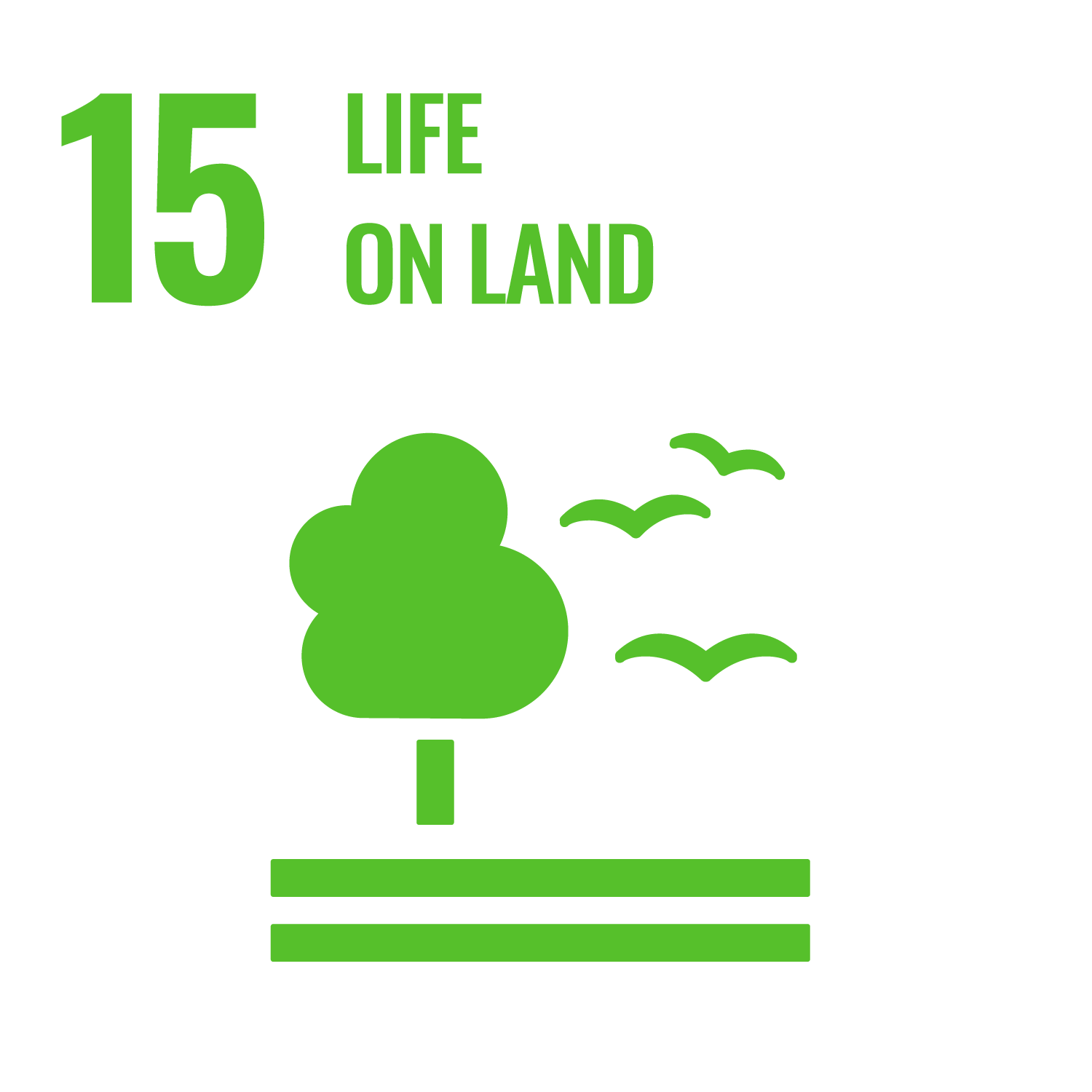 Goal 15. Life on Land
Goal 15. Life on Land
15.2.2 Sustainably farmed food on campus
AASTMT’s leadership have a profound responsibility on how to use the campus as an educational opportunity to promote sustainability awareness. Ending biodiversity loss is a worldwide concern, not a sideshow. This is explicitly stated in the United Nations' Sustainable Development Goals (SDGs), which were established in 2015. SDG 15 emphasizes biodiversity in particular, with the goal of "protecting, restoring, and promoting sustainable use of terrestrial ecosystems, sustainably managing forests, combating desertification, and halting and reversing land degradation and biodiversity loss." AASTMT has begun to respond to these SDGs by implementing them into their business models and initiatives.
AASTMT implement sustainable practices that support land ecosystems, conserve biodiversity, and ensure the sustainable use of terrestrial ecosystems, as outlined in the United Nations Sustainable Development Goal 15. AASTMT also covers educational initiatives, policy implementation, collaboration, waste management, and conservation efforts within the AASTMT campuses and its immediate environment.
AASTMT is seeking to reduce the food waste as much as they can. As the university committed to deliver healthy food for all parties in the university includes food in on Campus, Residences, and employees whether vegetarian or others. AASTMT makes sure that the food is available at each level to guarantee healthy food for ASTMT’s stockholders.
AASTMT aim to build generations of young entrepreneurs & change agents who reshape the social & economic status of the Arab region & Africa by enabling an environment of innovation, growth, support & mentorship for private businesses.
Human aspirations, on the other hand, must pass the test of sustainability. New companies directly created from the research and program at EC-AASTMT.
Are defined as register companies set up to exploit intellectual property that has originated from EC-AASTMT.
Farawlatech
Design and implementation of soilless cultivation systems for the production of high-tech strawberries based on the precision cultivation system for strawberry producers, based on precession agriculture methodology Farawlatech [1]
It uses the specialized fertilizer for strawberry, use innovative local media, schedule irrigation with high technology, increase cycles production in season and finally Improving working conditions and improving income
Farawlatech on the AASTMT web page
Production And Evaluation Crackers And Instant Noodles Supplement With Spirulina Algae
The study explores the use of spirulina algae in the production of crackers and instant noodles. Spirulina, a blue-green algae rich in protein, vitamins, phytoepigamates, antioxidants, and minerals, was found to increase protein ratio, ash content, and improve physical and cooking properties. The addition of 20% spirulina algae had lower scores for most properties compared to other tested products. This suggests spirulina algae could be used to improve nutritional status in children's food Production and evaluation crackers and instant noodles supplement with spirulina algae
Green Horizon: AASTMT Action Plan for SDG 15 - Academic Year 2021/2022
This action plan for 2021/2022 focuses on sustainable practices, policy implementation, waste management and conservation efforts on AASTMT campuses and surrounding communities, ensuring long-term ecosystem use. Schedule and host a series of educational events (webinars, workshops, lectures) on sustainable land use and conservation practices.
Promotion of Sustainably Farmed Food
2.1. Implement campus-wide policies to source food from sustainable farms.
2.2. Launch a campaign promoting the benefits of sustainably farmed foods in campus dining halls
AASTMT’s Green Horizon Action Plan on the AASTMT web page



